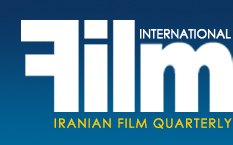|
Iranian cinema and 10th presidential election:
Flow – Focus
by Mehrzad Danesh
|
|

Although in political terms, the 10th presidential poll in Iran was a major development in the 30-year history of the Islamic Republic of Iran, it was also unparalleled in view of the role played by the Iranian filmmakers. This article will explain about their role in two fronts: firstly, making promotional and documentary films and, secondly, issuing statements or expressing viewpoints both for and against a specific candidate.
Documentaries made by the Iranian filmmakers were either independent works, or complied with the Iranian television’s policies which considered a definite time for every candidate to address the audience and talk about their economic, social, and political plans. Their debates with other candidates were also spectacular. Every candidate could produce two documentaries. This method has been in vogue in the Iranian television in the past 12 years and major filmmakers like Rasoul Sadr Ameli, Kamal Tabrizi, Ahmad Reza Darvish and Rasoul Molla-Qolipour have been involved in making such films. Since this last feature is more relevant to cinema, we will focus on it and documentaries will be analyzed here alphabetically sorted by the names of presidential candidates.
1. Mahmoud Ahmadinejad
Ahmadinejad’s both documentaries were directed by his arts advisor, Javad Shameqdari. He had also worked with Ahmadinejad in the past presidential poll and many believe that President Ahmadinejad’s election win was owed to Shameqdari’s promotional film because he had put special emphasis on Ahmadinejad’s simple life. Shameqdari’s name has been frequently heard over the past four years in relation to various affairs including his opposition to Oliver Stone’ plan to make a documentary about Ahmadinejad and his opposition to a visit to Tehran by members of Oscar Board of Governors. Shameqdari is a fundamentalist director who has made Sandstorm about the United States’ military debacle in the Iranian Tabas Desert back in 1980s.
During 10th presidential election, Shameqdari used a similar style in his documentaries. His first film started with a long shot of Tehran followed by a picture of Ahmadinejad and his team heading for the Ministry of Interior where he is to register for the election. That prelude was followed by scenes of his election campaign in spring of 2005 and his mottos about promoting justice and fighting extravagance. Shameqdari cut the scenes about justice to the present time when Ahmadinejad insists on a senior official at the Ministry of Interior, who has come to welcome him, to go back to his place and register his name just as they do for other candidates. In general, Shameqdari had focused on a number of issues: firstly, President Ahmadinejad’s provincial trips and emphasis on people’s enthusiasm to meet him; secondly, display of president’s down-to-earth encounters with ordinary people, especially children and the aged who were shown praying for him; and thirdly, Shameqdari’s interview with Ahmadinejad about economic, social, nuclear and foreign policies of the ninth government, which the president says were progressive. The film had put special stress on figures and statistics as a reaction to critics who maintained that Iran’s political and economic status has been in decline under President Ahmadinejad. Shameqdari’s film also included some foreign scenes: admiration for Ahmadinejad from some Iranian expatriates (including Arghavan Rezaei, Iranian tennis player who lives in France), admiration from an American journalist, the welcome given to Ahmadinejad by people in some developing countries, and excerpts from Durban 2 conference and Ahmadinejad’s interview with CNN. In a scene of the second film, two motorists get close to the president’s car and admire him. News later had it that both of them were television staff and that revelation led to controversies. On the whole, Shameqdari’s first film was not very coherent and consisted of a series of archived pictures from President Ahmadinejad’s provincial trips which had been made up into an exaggerated and populist account of the ninth government’s performance.
SUBSCRIBE
[Page: 28]
|
|
|
|
|
President & Publisher
Massoud Mehrabi
Editors:
Sohrab Soori
Translators:
Sohrab Soori
Behrouz Tourani
Zohreh Khatibi
Saeed Khamoush
Contributors
Shahzad Rahmati
Saeed Ghotbizadeh
Advertisements
Mohammad Mohammadian
Art Director
Babak Kassiri
Ad Designers
Amir Kheirandish
Hossein Kheirandish
Cover Design
Alireza Amakchi
Correspondents
E.Emrani & M. Behraznia (Germany)
Mohammad Haghighat (France)
A. Movahed & M. Amini (Italy)
Robert Richter (Switzerland)
F. Shafaghi (Canada)
B. Pakzad (UAE)
H. Rasti (Japan)
Print Supervisors
Shad-Rang
Noghreh-Abi
Gol-Naghsh
Subscription & Advertising Sales
Address: 10, Sam St., Hafez Ave., TEHRAN, IRAN
Phone: +98 21 66722444
Fax: +98 21 66718871
info@film-magazine.com
Copyright: Film International
© All rights reserved,
2023, Film International
Quarterly Magazine (ISSN 1021-6510)
Editorial Office: 5th Floor, No. 12
Sam St., Hafez Ave., Tehran 11389, Iran
*
All articles represent views of their
authors and not necessarily
those of the editors
|
|
|

